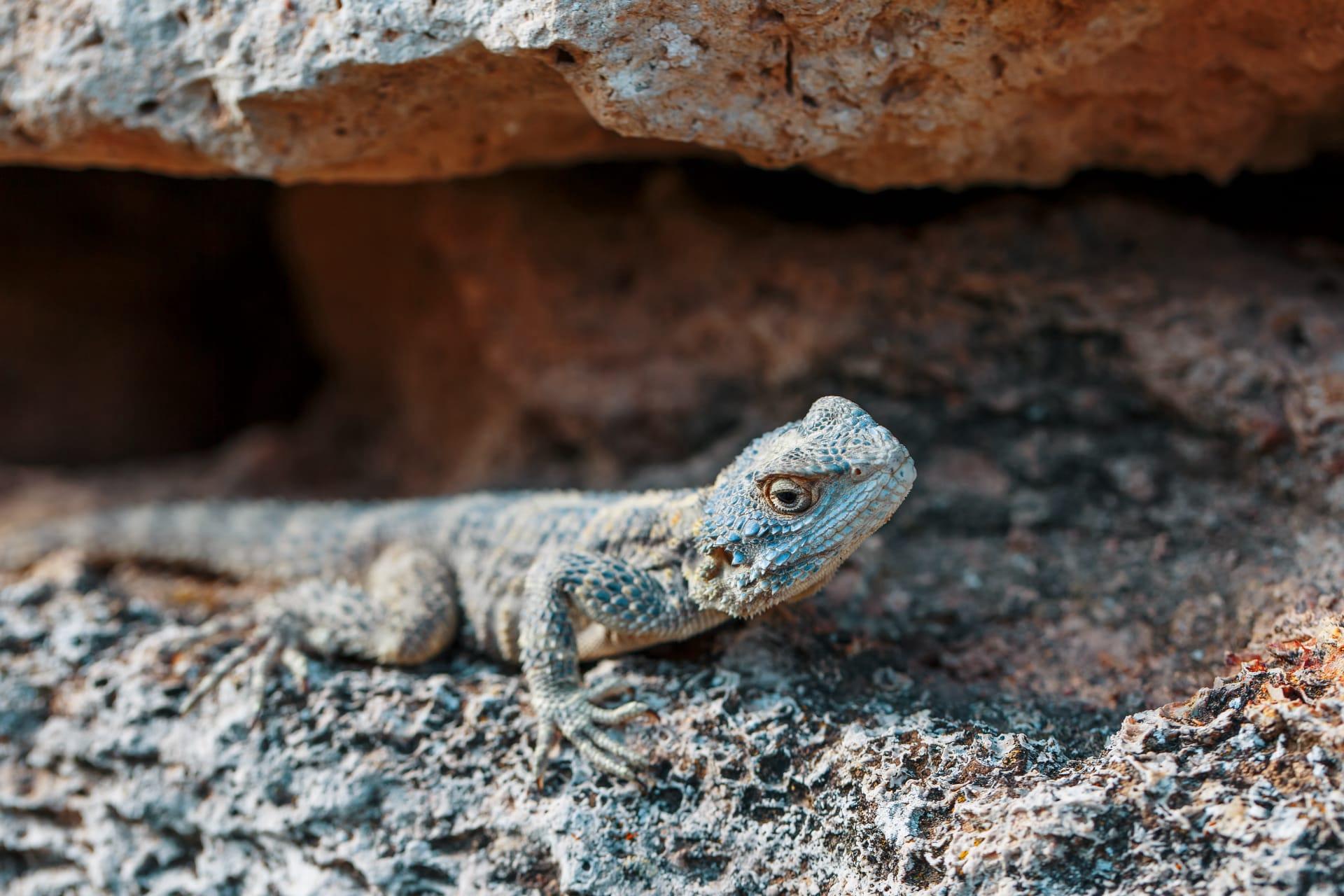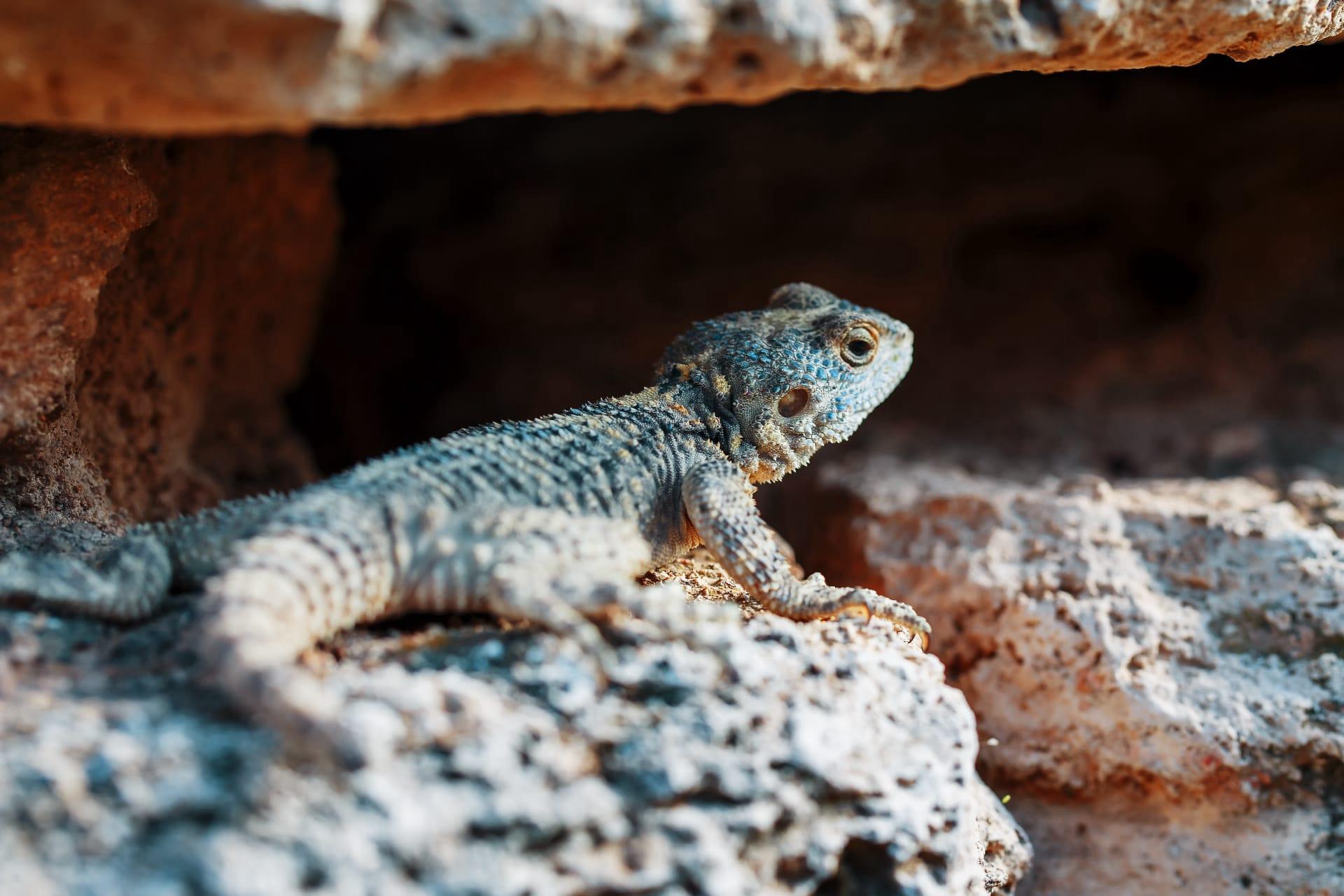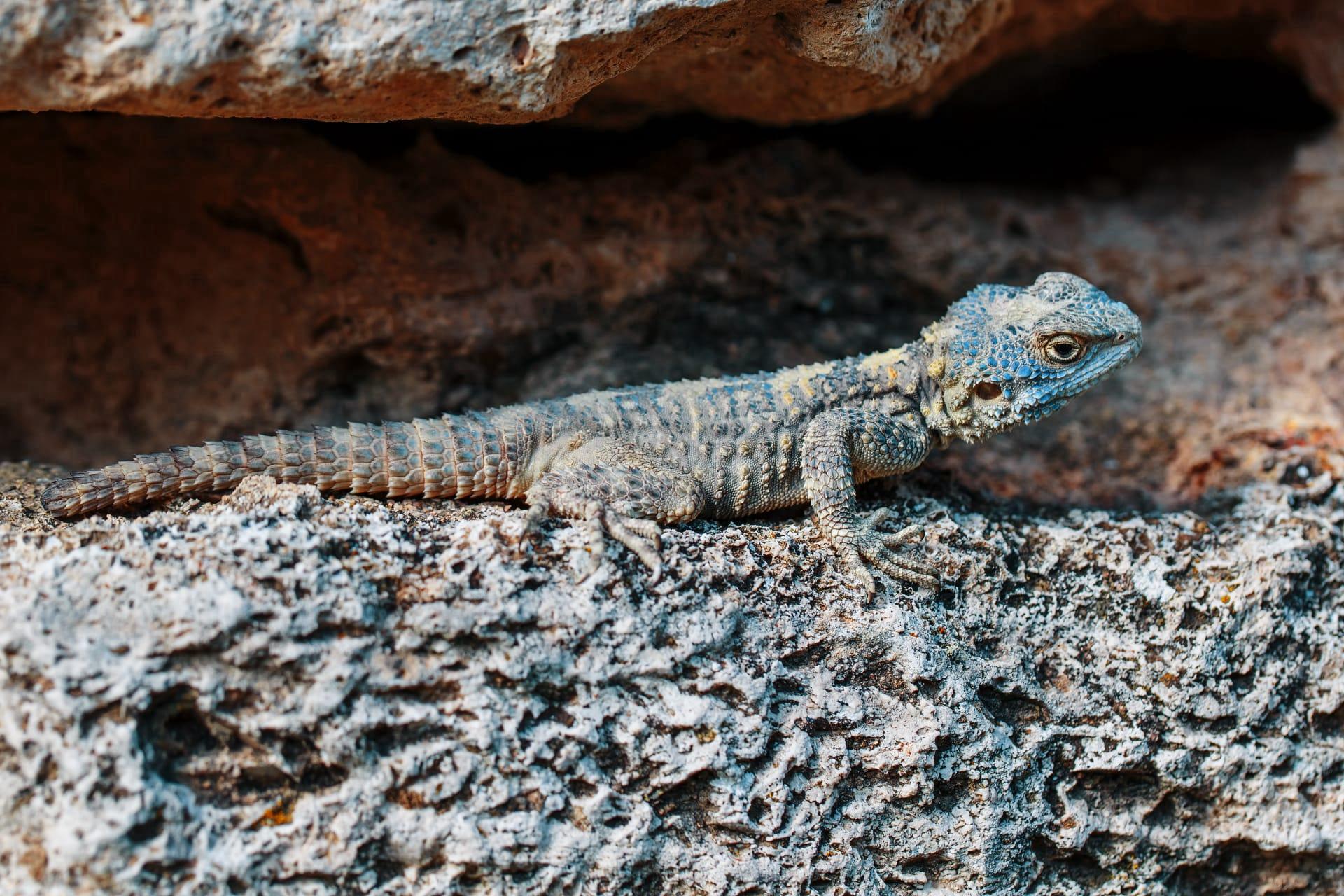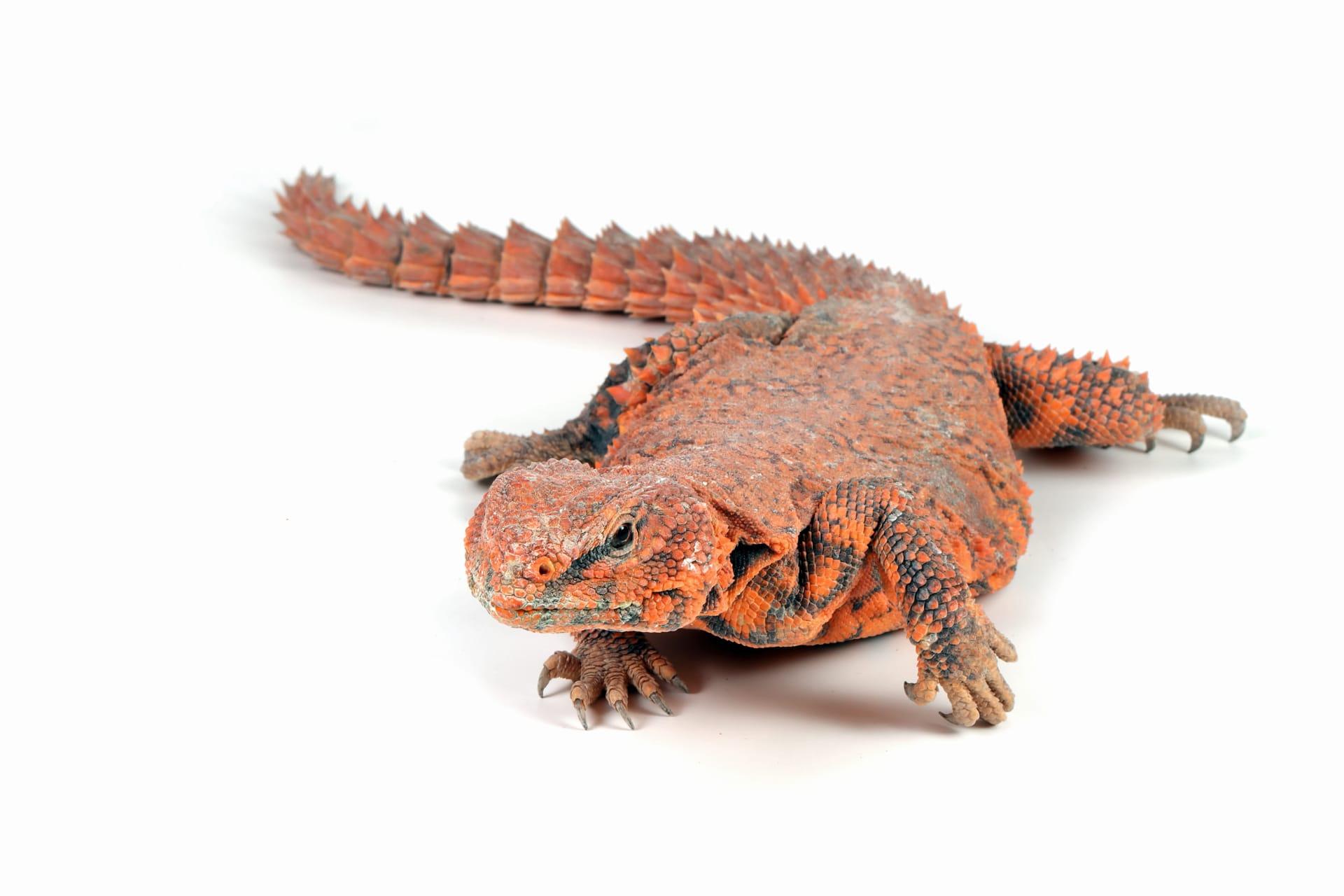African Spiny Tailed Lizard Trivia
- Home /
- Trivia Question /
- Animal /
- African Spiny Tailed Lizard Trivia
1
Question: What distinguishes the African Spiny Tailed Lizard from other lizard species in terms of physical appearance?
Answer: The African Spiny Tailed Lizard, scientifically known as Cordylus tropidosternum, stands out with its distinctively armored appearance. It possesses rows of spiny scales along its tail and body, giving it a bristly, almost prehistoric look. These scales are not just for show; they serve as a defense mechanism against predators. The lizard's body color ranges from dark brown to gray, providing excellent camouflage against the rocky terrains of East Africa, where it predominantly resides.
Question: How does the African Spiny Tailed Lizard adapt to its environment for survival?
Answer: This intriguing reptile has adapted remarkably to its harsh environment. It's primarily found in rocky outcrops and savannahs of East Africa, where temperatures can soar. The lizard is a master of thermoregulation, basking in the sun to raise its body temperature and seeking shade or burrows to cool down. Its spiny armor also plays a role in deterring predators in these open habitats. Moreover, the African Spiny Tailed Lizard is an adept climber, using its strong limbs and sharp claws to navigate the rocky landscapes, which also serve as a refuge from predators and harsh weather.

2
Question: Is it true that the African Spiny Tailed Lizard can detach its tail to escape predators?
Answer: Contrary to popular belief, the African Spiny Tailed Lizard does not practice autotomy - the ability to detach its tail as a defense mechanism. Unlike some other lizard species that can shed and regrow their tails, this lizard relies on its tough, spiny armor and agility to avoid predators. If caught, it can become very aggressive, biting and using its spiny tail as a weapon.
Question: Do African Spiny Tailed Lizards lay eggs?
Answer: Another common misconception is that all lizards lay eggs. However, the African Spiny Tailed Lizard is ovoviviparous. This means the females give birth to live young instead of laying eggs. The young lizards are born fully formed and are miniature versions of the adults, complete with spiny scales. This method of reproduction is advantageous in their harsh, unpredictable environment, as it offers the young immediate protection without the vulnerability of an egg stage.

3
Question: What is the typical diet of the African Spiny Tailed Lizard?
Answer: The African Spiny Tailed Lizard is primarily insectivorous. Its diet consists mainly of small insects like beetles, ants, and termites. It uses its quick reflexes and agile tongue to catch these small prey. Occasionally, it may also consume plant material, especially during dry seasons when insects are less abundant. This adaptability in diet helps it to survive in varying conditions.
Question: How do African Spiny Tailed Lizards communicate with each other?
Answer: Communication among these lizards is fascinating. They primarily use body language and physical displays. Dominant males exhibit territorial behavior by doing push-ups and head bobs to assert dominance and ward off rivals. They also use their spiny tails to make rustling sounds as a form of communication, especially during mating rituals. Although they're not vocal creatures, these physical displays are quite effective in their social interactions.

4
Question: How long do African Spiny Tailed Lizards live, and what are their main threats?
Answer: In the wild, these lizards have a lifespan of approximately 10 to 15 years. However, their survival is increasingly threatened by habitat loss and the pet trade. Deforestation and human encroachment into their natural habitats reduce their living space, while their unique appearance makes them a target for illegal pet trade. Conservation efforts are crucial to ensure their survival.
Question: Can the African Spiny Tailed Lizard regenerate its spiny scales if damaged?
Answer: Unlike some reptiles that can regenerate lost limbs or tails, the African Spiny Tailed Lizard cannot regenerate its spiny scales once damaged. These scales are crucial for their survival, providing defense against predators and aiding in camouflage. Any damage to these scales can be detrimental to the lizard, making it more vulnerable to threats. This emphasizes the importance of their natural protective behavior and habitat conservation.

5
Question: What role does the African Spiny Tailed Lizard play in its ecosystem?
Answer: The African Spiny Tailed Lizard plays a significant role in its ecosystem, primarily as a predator of insects. By controlling insect populations, it helps maintain ecological balance. Furthermore, as a prey species for larger animals, it's an integral part of the food chain. Its existence also indicates a healthy, functioning ecosystem, as it thrives in undisturbed natural habitats.
Question: Are African Spiny Tailed Lizards social creatures?
Answer: These lizards exhibit a unique blend of social and solitary behaviors. While they are generally solitary, they can be quite territorial, especially males during mating season. However, they also demonstrate social tendencies, like basking in groups on rocks and occasionally sharing burrows. This social behavior is more pronounced in captive environments, where they can be seen interacting more frequently with each other.